Share the post "How Soccer Has Changed (Revolution or Evolution)"
The sport of soccer dates back over 2,000 years. FIFA’s “History of Football” chronicles documents that an early form of the game was played in China in the second and third centuries BC.
Further evidence of similar games has been found throughout history worldwide. However, it wasn’t until 1848 that the official “Cambridge Rules” were established.
How soccer has changed in its contemporary form is, and continues to be a far more fascinating story.
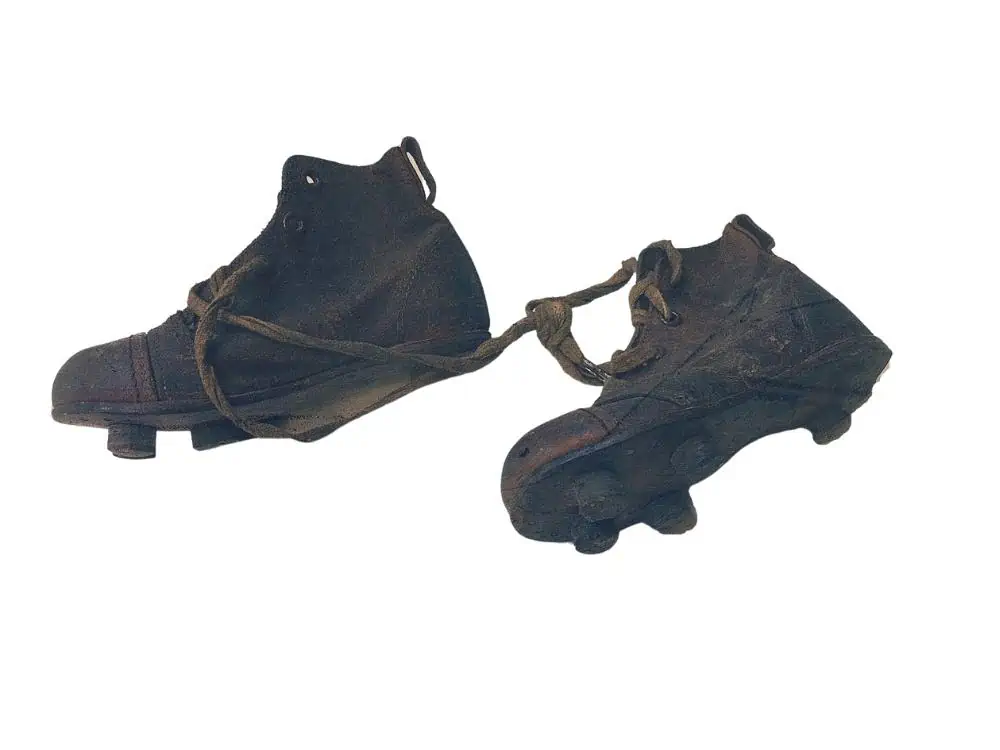
- How did soccer evolve?
- How have soccer rules changed over time?
- Evolution of soccer equipment
- Influence of Globalization
- Soccer Salaries
- How has TV affected soccer?
- How does social media affect soccer?
- Most Followed Soccer Players on Instagram
- Is soccer growing in popularity?
- V.A.R.
- Sports Science and the Advancement in Soccer
- History and Changes in Soccer Tactics and Style of Play
- Changes in Coaching and Tactics
- Impact of Sports Science and Medicine
How did soccer evolve?
Soccer has changed in countless ways, from how the game is played on and handled off the field to how fans have become intertwined with their teams and players. Three key factors are at the core of all significant developments within the game:
- Technology
- Media
- Social Media
- Tactical Development
- Style of Play
A once simple game, soccer has transcended into a global phenomenon involving more than 11 v 11 on a Saturday or Sunday afternoon. Why’s this come to be? How has soccer changed since its inception all those years ago? Let’s take a look.
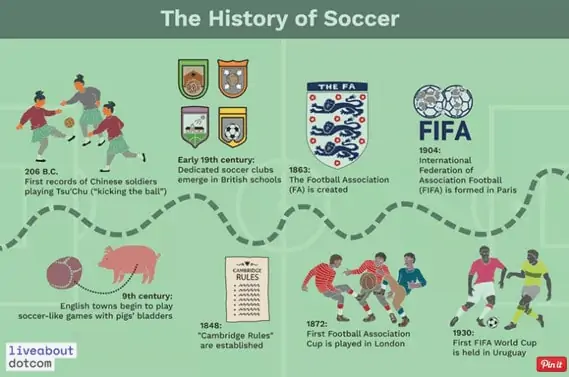
How have soccer rules changed over time?
Soccer rules have changed significantly over time. Here are the major changes you might not have heard about:
- Goalkicks were introduced in 1869.
- Crossbarswere only added to goalposts in 1875!
- Penaltykicks were first introduced in 1891.
- Themodern offside rule was implemented in 1990.
- The pass-back rule that goalies are not permitted to touch the ball with their hands after a deliberate pass was introduced in 1992.
- Goal-linetechnology was introduced in 2013.
- VARwas debuted in 2017.
As with all industries, soccer has experienced much change due to technology, both in-game and externally.
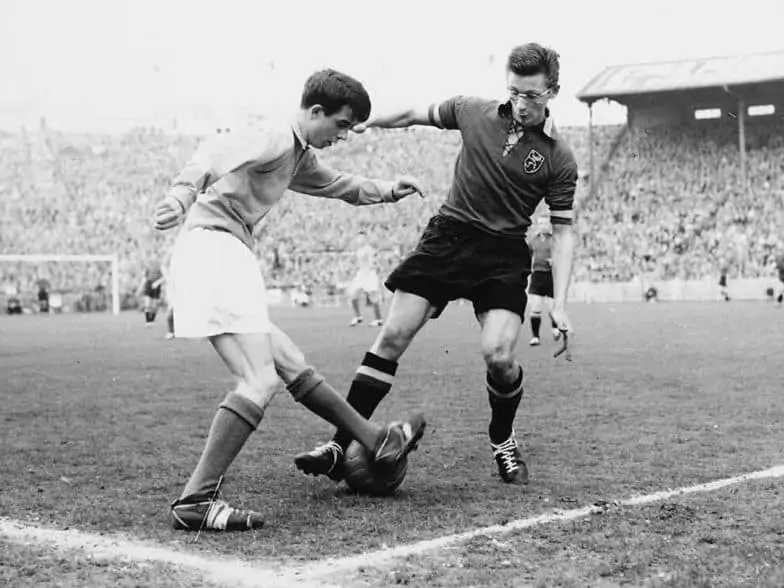
Evolution of soccer equipment
1. Soccer Cleats/Shoes:
- Early Days: Originally, soccer shoes were heavy and made from thick leather, offering little to no flexibility.
- Advancements:
- Lightweight Materials: Introduction of lighter materials like synthetic fabrics and kangaroo leather.
- Design Improvements: Better grip and control through advanced stud patterns and sole designs.
- Player-Specific Designs: Shoes tailored for different playing styles and positions.
- Impact: Enhanced player speed, agility, and overall performance.
2. Soccer Balls:
- Early Versions: Initially made from animal bladders or leather, these balls were inconsistent in shape and size.
- Synthetic Materials: The introduction of synthetic materials in the 1960s led to more durable and weather-resistant balls.
- Design Innovations:
- Improved Aerodynamics: Changes in panel design for better flight stability and accuracy.
- Enhanced Visibility: Bright colors and patterns for better visibility on the field.
- Impact: More predictable ball behavior and improved playability in various weather conditions.
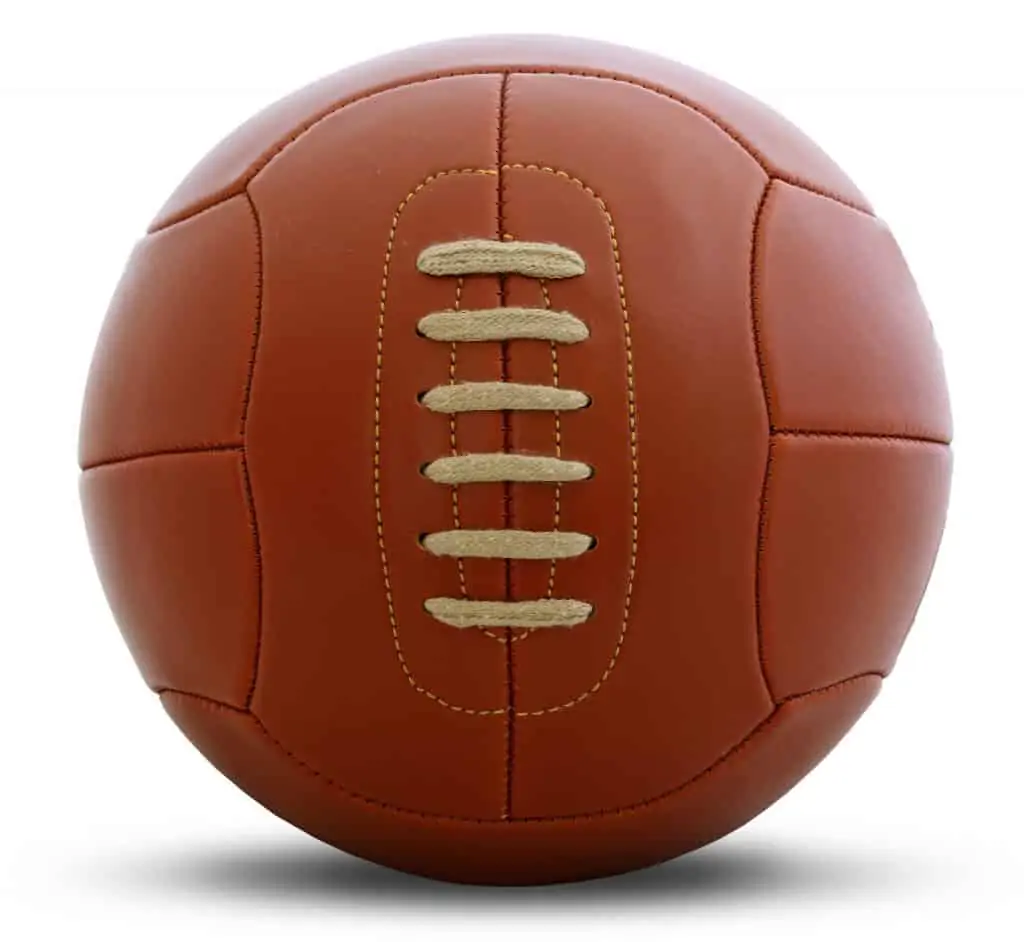
3. Protective Gear:
- Shin Guards: Once rudimentary, now made with lightweight, impact-absorbing materials.
- Headgear: Development of padded headbands to reduce the risk of head injuries.
- Goalkeeper Gloves: Evolution from basic gloves to those with enhanced grip and finger protection.
4. Goalkeeper Equipment:
- Gloves: Transition from simple leather gloves to advanced models with latex foam for better grip and cushioning.
- Jerseys: Padded jerseys for added protection during dives and collisions.
5. Uniforms/Kits:
- Fabric Technology: Shift from cotton to breathable, moisture-wicking synthetic fabrics.
- Fit and Comfort: More ergonomic designs for better movement and comfort.
6. Training Equipment:
- High-Tech Tools: Use of GPS trackers, heart rate monitors, and other tech for performance analysis.
- Innovative Training Aids: Development of specialized equipment for skill and strength training.
Impact on the Game:
- Performance Enhancement: Players can perform at higher levels with reduced risk of injury.
- Game Speed: Faster and more dynamic gameplay.
- Player Safety: Reduced risk of injuries thanks to better protective gear.
- Tactical Evolution: Changes in equipment have influenced tactics and playing styles.
The evolution of soccer equipment is a testament to the sport’s growth and the continuous quest to improve player performance and safety. These advancements have not only made the game more enjoyable to play but also more exciting to watch.
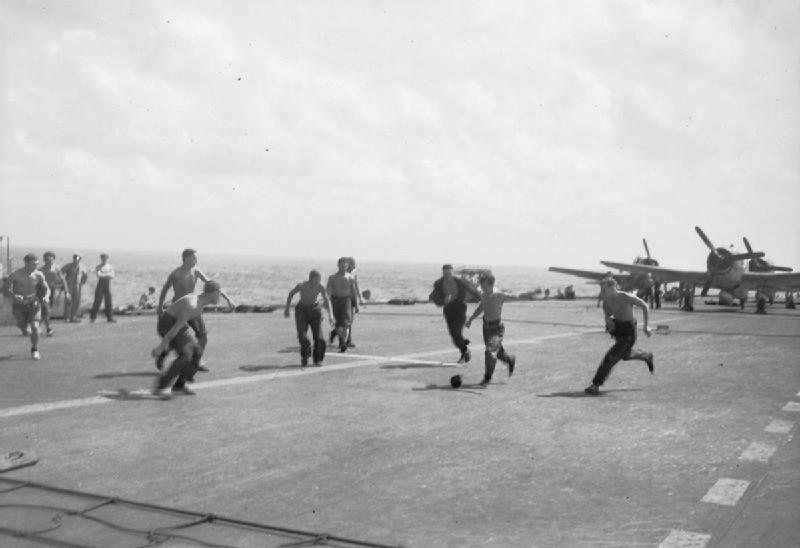
Influence of Globalization
The influence of globalization on soccer has been profound, transforming it into a truly global sport. This transformation is evident in several key areas:
1. Diverse Player Representation in Major Leagues:
- International Talent: Major leagues worldwide, like the English Premier League, La Liga, and Serie A, now feature players from many countries.
- Cultural Exchange: This diversity brings different playing styles and techniques, enriching the tactical depth and appeal of the leagues.
2. Global Fan Base:
- Worldwide Viewership: Matches are broadcast globally, creating fan bases in countries far from the leagues’ locations.
- Social Media and Digital Platforms: These have bridged the geographical gap, allowing fans worldwide to follow teams and players closely.
3. International Tournaments:
- World Cup and Continental Competitions: Events like the FIFA World Cup and UEFA European Championship showcase global talent and foster international rivalries.
- Club Tournaments: Competitions like the UEFA Champions League and Copa Libertadores feature clubs from different countries, further promoting international engagement.
4. Cross-Border Player Movements:
- Transfers and Loans: The transfer market has become global, with players regularly moving between continents.
- Youth Academies and Scouting Networks: Top clubs now operate global scouting networks to identify and nurture talent worldwide.
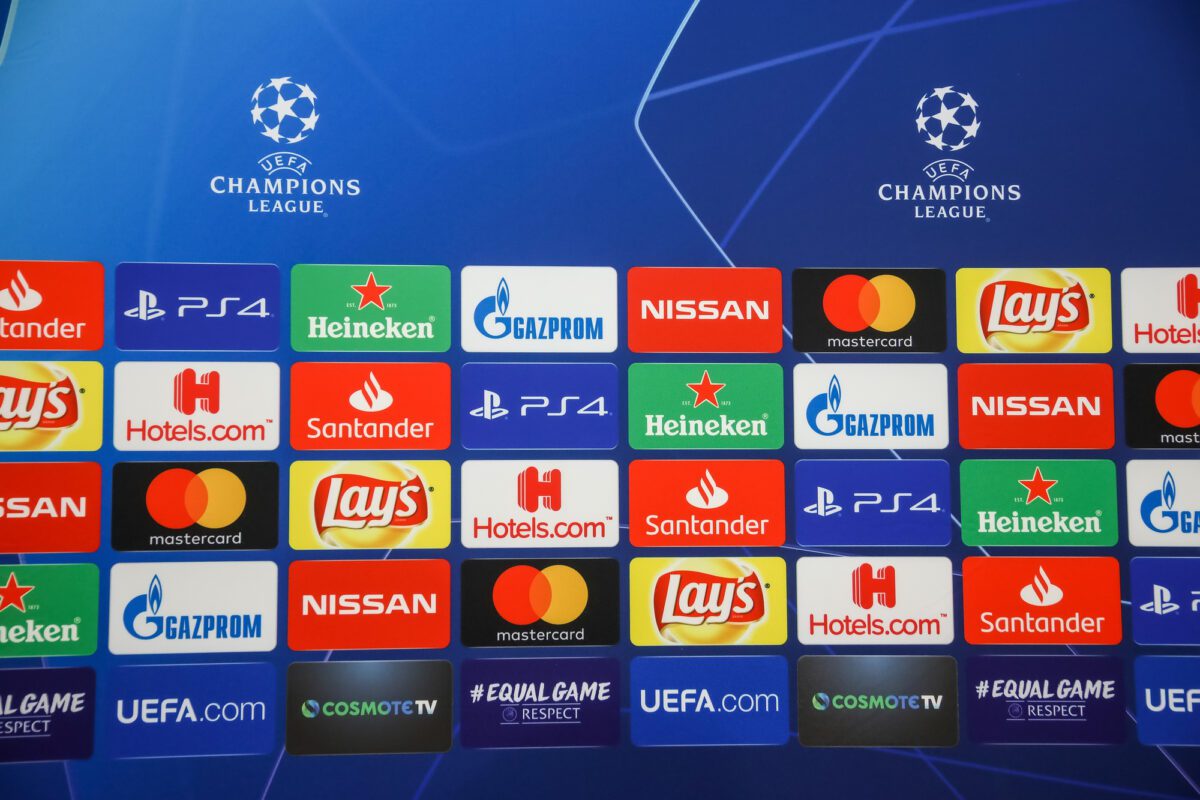
5. Economic Impact:
- Sponsorships and Partnerships: Global brands sponsor teams and tournaments, contributing to the sport’s financial growth.
- Merchandising: Clubs sell merchandise globally, expanding their brand reach.
6. Cultural Impact:
- Role Models: Players from diverse backgrounds become global icons and role models, influencing cultures and societies.
- Social Issues: Soccer often becomes a platform to address and raise awareness about global social issues.
7. Technological Advancements:
- Broadcasting and Streaming: Advances in technology have made it easier to broadcast and stream games worldwide.
- Data and Analytics: Global data networks provide detailed analytics, enhancing the understanding and strategy of the game.
8. Development of the Game Globally:
- Grassroots Growth: Investment in soccer infrastructure and youth development programs has grown worldwide.
- Women’s Soccer: The globalization of soccer has also boosted the growth and popularity of women’s soccer.
Globalization has made soccer more than just a sport; it’s a global phenomenon that transcends cultural and national boundaries. It has not only diversified the talent pool but also united fans across the globe, making soccer a powerful tool for cultural exchange and global unity. The sport’s global reach continues to expand, bringing different parts of the world closer together through a shared love for the game.
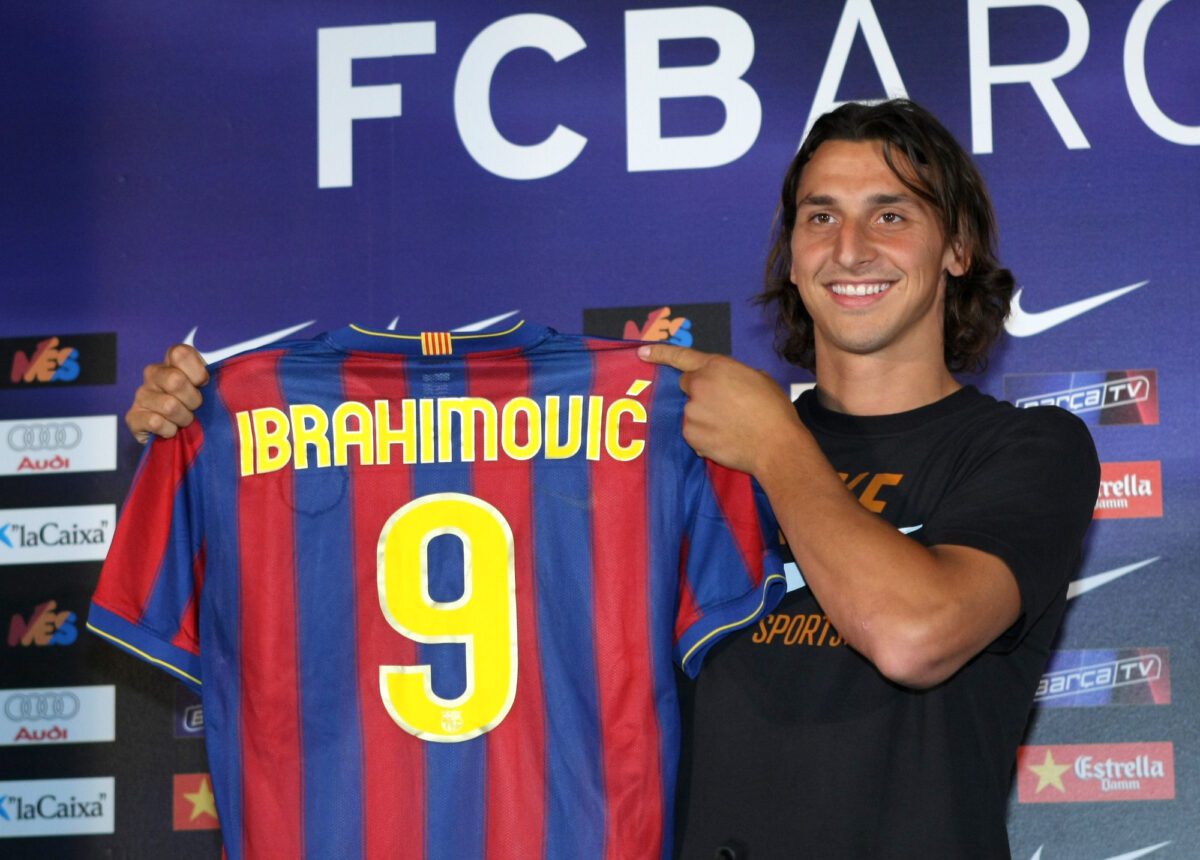
Soccer Salaries
Salaries in soccer have increased significantly over the years, particularly in the top leagues and for top players. In the early years of professional soccer, players were not paid as much as today. However, player salaries have skyrocketed with the sport’s growth, television rights deals, sponsorships, and other revenue streams.
There has been a tremendous increase in player salaries in the past few decades. In the 1990s, the average salary of a Premier League player in England was around $80,000 per year. Today, the average wage is over $3.5 million per year.
Messi and Ronaldo
Top players like Lionel Messi and Cristiano Ronaldo earn even more. In recent years, it has not been uncommon for top players to earn salaries over $25 million annually. This does not include additional income from sponsorships and endorsements.
The increase in salaries can be attributed to the growing popularity of the sport, increased revenue from broadcasting rights, and the influx of wealthy owners and investors into the game. As soccer has become a global business, the competition for top players has increased salaries.
Lower Leagues
It’s important to note that while salaries for top players have skyrocketed, there is still a significant wage disparity between the top players and lower-tier players. Many players in lower leagues and divisions earn much lower salaries and may struggle to make a living solely from playing soccer.
Overall, the increase in player salaries reflects the growth and commercialization of the sport. Still, it has also raised questions about the sustainability of such high wages and the impact on the overall financial health of clubs and leagues.
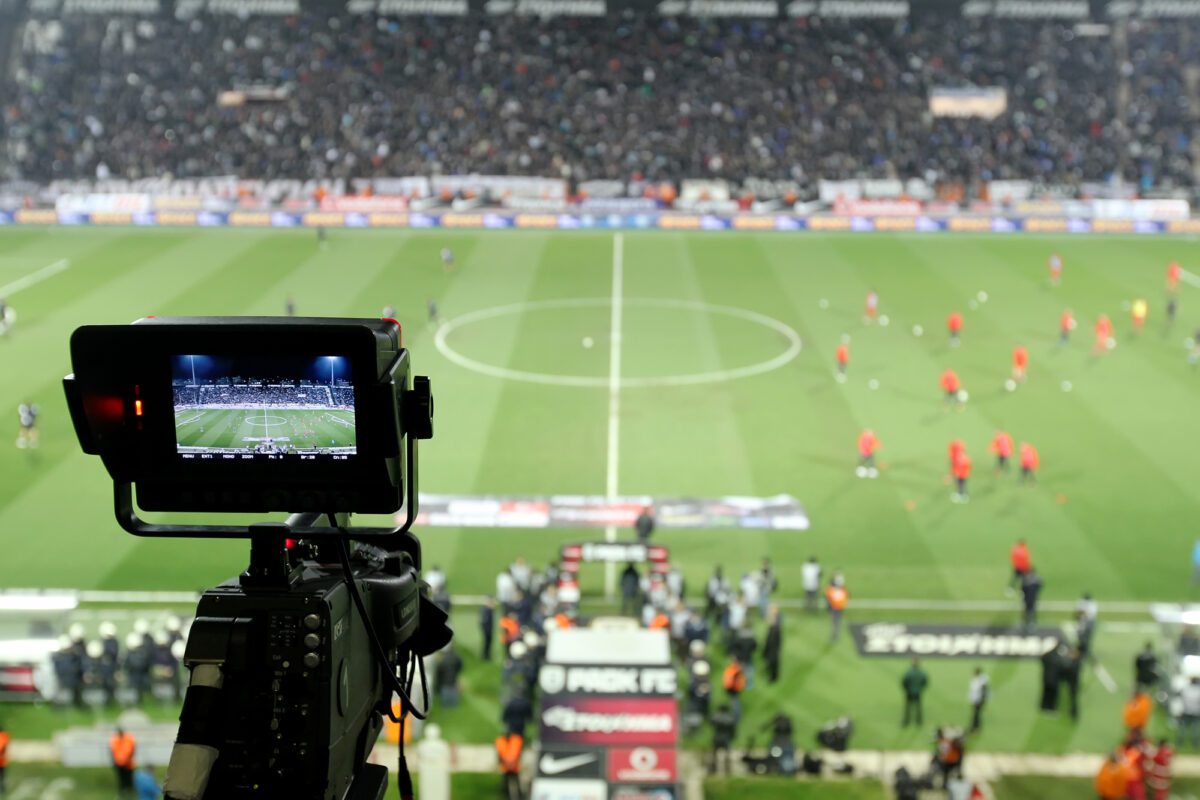
How has TV affected soccer?
When soccer was first being played, there were no TVs. The BBC broadcasted the first-ever televised soccer game on September 16th, 1937. Over 80 years later, it’s the most viewed sport on the planet. Over 3.5 billion people watched the 2018 World Cup in Russia.
That’s almost half the population of Earth! Sports broadcasters are now airing more games than ever before. For the 2019 – 2022 cycle, the Premier League sold its broadcasting rights for a record $11.7 billion.
The broadcasting structure for Major League Soccer differs from the European game. The programming focus is more localized and varies from franchise to franchise.
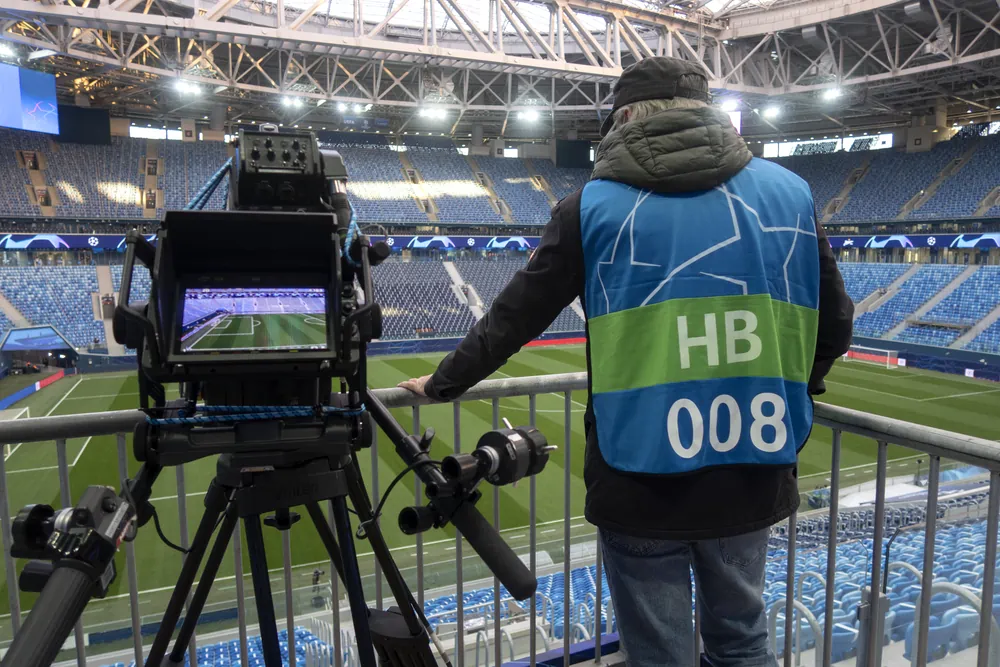
MLS Broadcasting Rights
However, the MLS reportedly gathers all local and national media resources to push for a large broadcasting deal in 2022. The goal is to maximize exposure to the league, drawing in eyes from every corner of the US market.
As MLS vice-president of Media, Seth Bacon told Sports Business Journal:
“We’re constantly thinking about our media rights strategy, and media rights and content are the most significant assets that we and any other league have”.
Seth Bacon
The TV is opening up more and more people to the game daily.

How does social media affect soccer?
Social Media has fundamentally changed the relationship between fans and players. It provides a direct communication link, unlike any technology in history. A shift in social trends toward mobile devices has forced teams, broadcasters, and players to focus on social media and all things mobile.
Social media has become the first point of communication and the most important and influential marketing tool available to soccer franchises. Not only does social media allow soccer organizations to share content with their followers, but it also encourages engagement with fans and helps build valuable relationships.
Each platform serves a different purpose and has changed the sport differently.
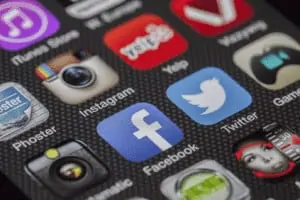
Instagram and The Influence on Soccer
Instagram has become a modern player’s voice. It’s the most personable social media platform, giving followers access to their on-field heroes. Fans see Instagram, more than any other social platform, as the ideal way to interact with players and teams.
Nielsen Sports reported that Manchester United achieved almost 27,000 interactions (comments, likes, shares, etc.) per 1,000 Instagram fans, compared to 4,229 interactions per 1,000 Facebook fans. Unsurprisingly, Instagram is the fastest-growing social media platform for soccer brands and organizations.
3 out of the top 10 most-followed Instagram accounts are soccer players, with one of those players being the most followed Instagram account. Can you guess who they are?
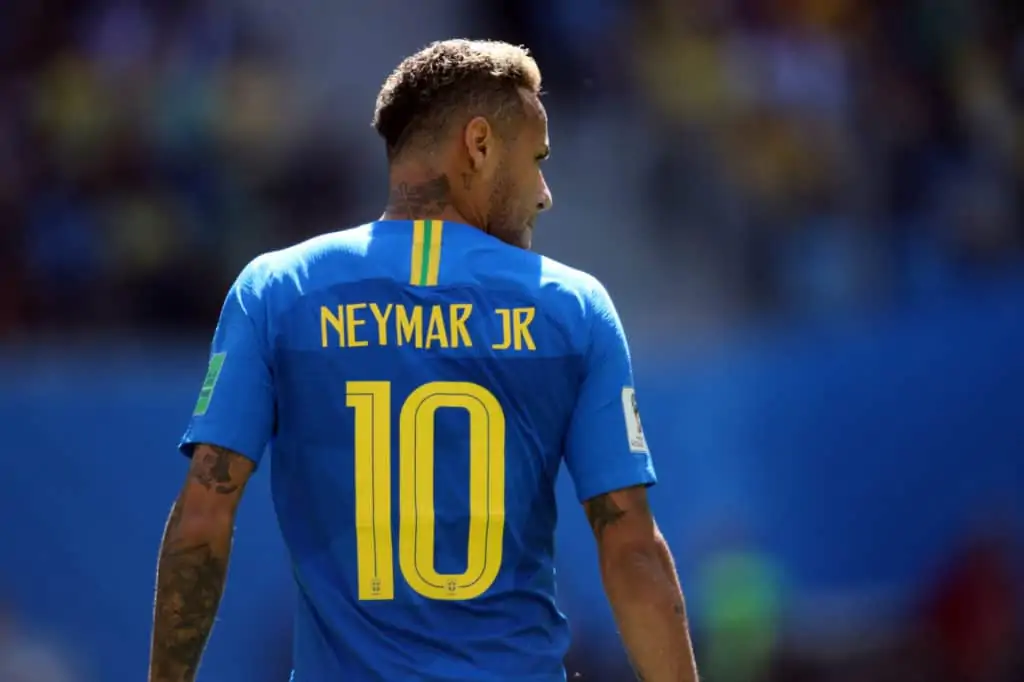
Most Followed Soccer Players on Instagram
10. Neymar

9. Messi

1. Cristiano Ronaldo
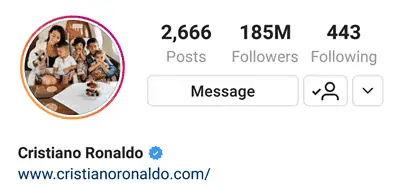
Individual players’ sponsorship deals rely heavily on their social media presence. A player’s value to a sponsor has as much to do with their off-field game as their on-field one. In the modern era, it’s rare to encounter a soccer player with no social media, particularly Instagram.
Players must plug in their sponsors and regularly reflect on every game. Instagram and soccer players now go hand-in-hand. This gives players a lot of power over their teams.
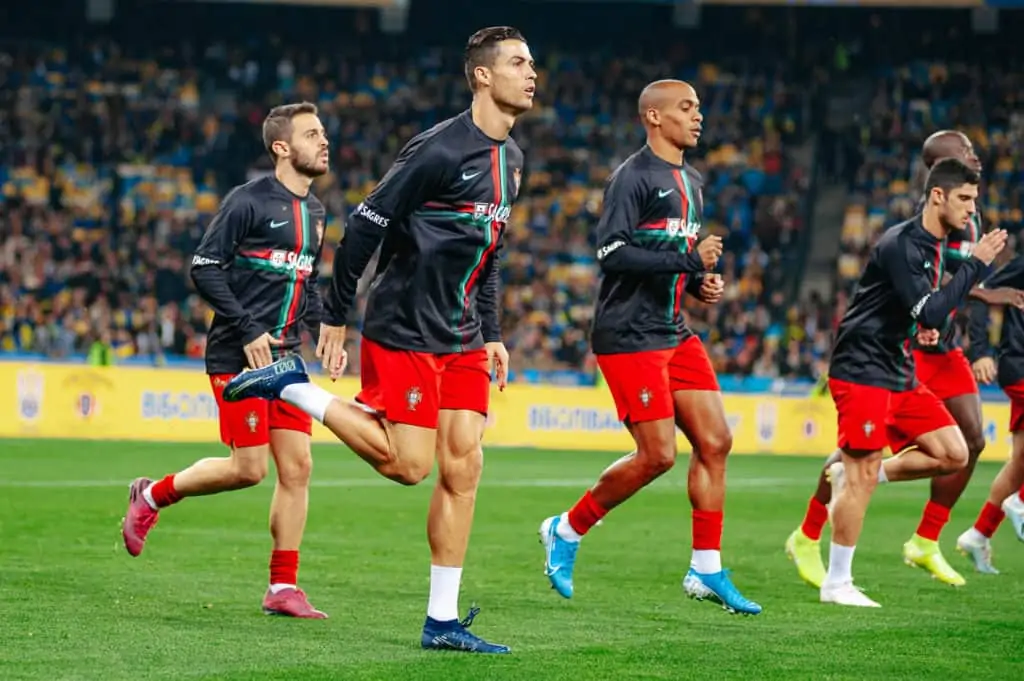
A player’s image rights and social media presence strongly influence big-money transfers. There has been a clear shift in the balance of power between franchises and players.
Why Do Soccer Teams and Players Use X (Twitter)?
If Instagram is the leading voice for players, X is most definitely the fans’ voice. It provides the landscape for fan opinion and discussion and is home to millions of debates and arguments about soccer.
X has not only changed the game for fans but it’s also become one of the primary news sources in soccer. Transfer news and rumors are constantly on X, with many accounts dedicated solely to bringing you the ‘inside scoop’ on off-season trades. Journalists regularly break exclusive stories on X. Teams use it to release starting XIs before every game.
Sports broadcasters have bought the rights to upload game highlights as they happen on social platforms. X has become the go-to source for live sports content. If a host isn’t posting a highlight, they may #LiveTweet the event, constantly updating their followers.
Tuning into the news or sports telecasts for soccer updates is a thing of the past. Fans now need updates immediately.
Do Soccer Players and Teams use Facebook?
Facebook is the world’s number 1 social media channel and, in turn, is the biggest channel for soccer teams and players. Although the platform retains a lot of importance and value, statistics show that its growth has plateaued, and it’s no longer the favored place for the consumption of soccer content.
Facebook has changed the game because it was the first major social media platform for soccer content. However, the accessibility provided by the likes of Instagram and X makes them the future players in the social media market.
| X | Youtube | |||||||
| Team | Fans | +/- | Fans | +/- | Fans | +/- | Fans | +/- |
| Manchester United | 73.3M | -0.6% | 18.6M | 12.1% | 25.3M | 25.4% | 1.3M | 163.3% |
| Liverpool | 32.4M | 6.4% | 10.9M | 15.6% | 11.4M | 116.9% | 1.8M | 137.6% |
| Machester City | 36.7M | 26.3% | 6.6M | 17.2% | 9.8M | 64.2% | 1.6M | 45.8% |
Table outlining the social media numbers and growth % of the EPL’s biggest 3 teams | Info. Courtesy of The Drum.
Is soccer growing in popularity?
The commercial value of social media is paramount in today’s game. Strategies are essential to ensure a player or franchise gets the necessary exposure. It opens up many opportunities, creates a vulnerability, and provides a platform for negativity.
There is no hiding place for soccer players today. Many are subject to scathing criticism and often harmful abuse on social media. For its many positive effects on the sport, social media has a downside.
Although it does not directly influence what happens on the field, social media has a firm stronghold on almost everything off the field. It controls how the sport is consumed as a whole. It generates millions of dollars, but is it beginning to affect the game’s purity negatively?
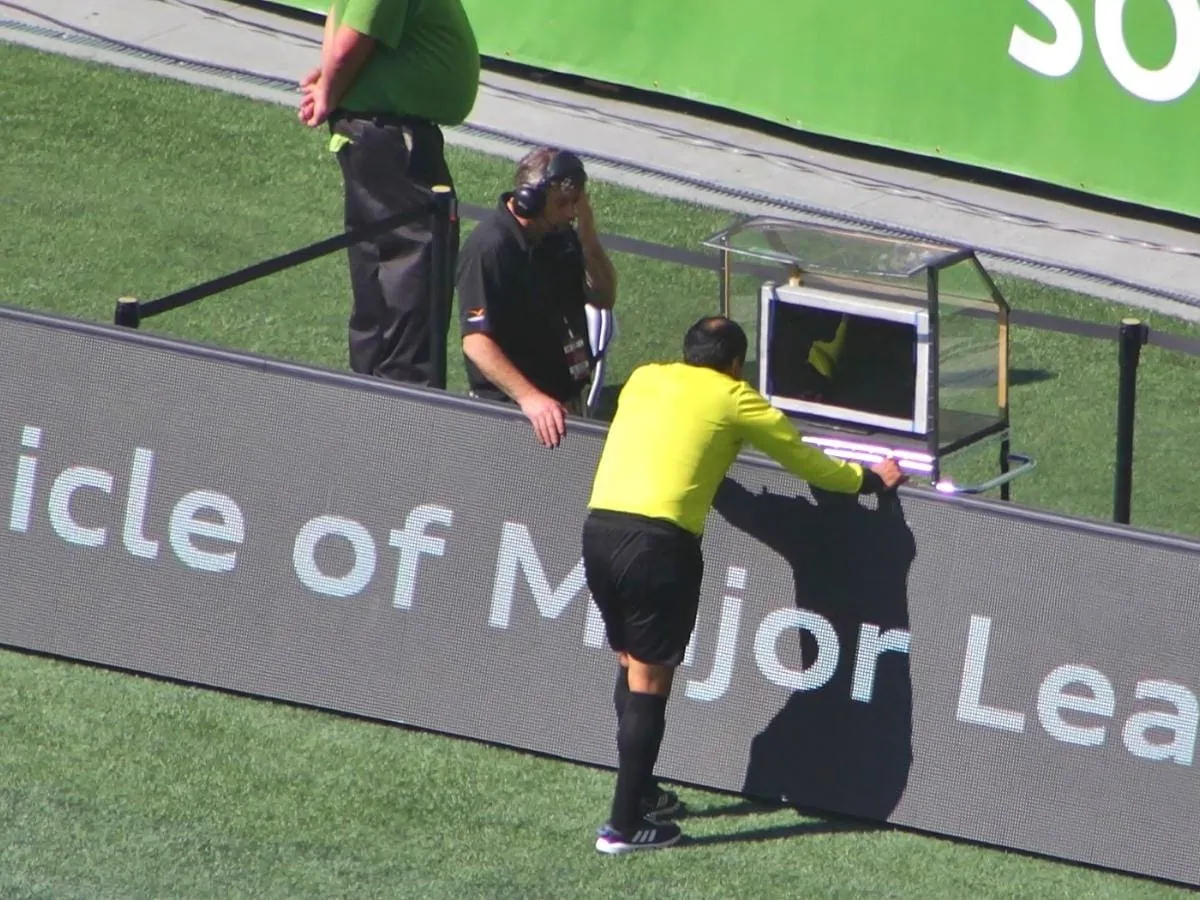
V.A.R.
Video-Assisted-Referee is an external official who reviews decisions made by the in-game referee through video. V.A.R. and the in-game referee communicate live via headset. Since its introduction to a worldwide audience in 2018, there has been no escaping V.A.R. It’s had a say in the two biggest cup finals in world soccer since then:
The World Cup Final in 2018, and the Uefa Champions League Final in 2019. V.A.R. also contributed to the change of the handball rule earlier this year. Despite having a massive impact on the sport, V.A.R. hasn’t had a hot welcome to the game. Judgments made by V.A.R. are still regularly disputed by players, coaches, pundits, and fans.
Game decisions are not necessarily black and white and will always draw debate.
How Has VAR Technology Changed Soccer?
Closely examining in-game events magnifies this and puts referee calls under intense scrutiny. For many, V.A.R. has brought about too much negative change and hasn’t improved the game. It slows the game down and dampens the atmosphere. Some also believe that it’s exposed issues with the rules themselves.
The counter-argument acknowledges that despite its teething problems, V.A.R. is a step in the right direction regarding the use of technology in sports. It’ll further develop and help eliminate human error (for the most part), making for a more even playing field. Get used to it, folks. V.A.R. has changed the game, and it’s here to stay!
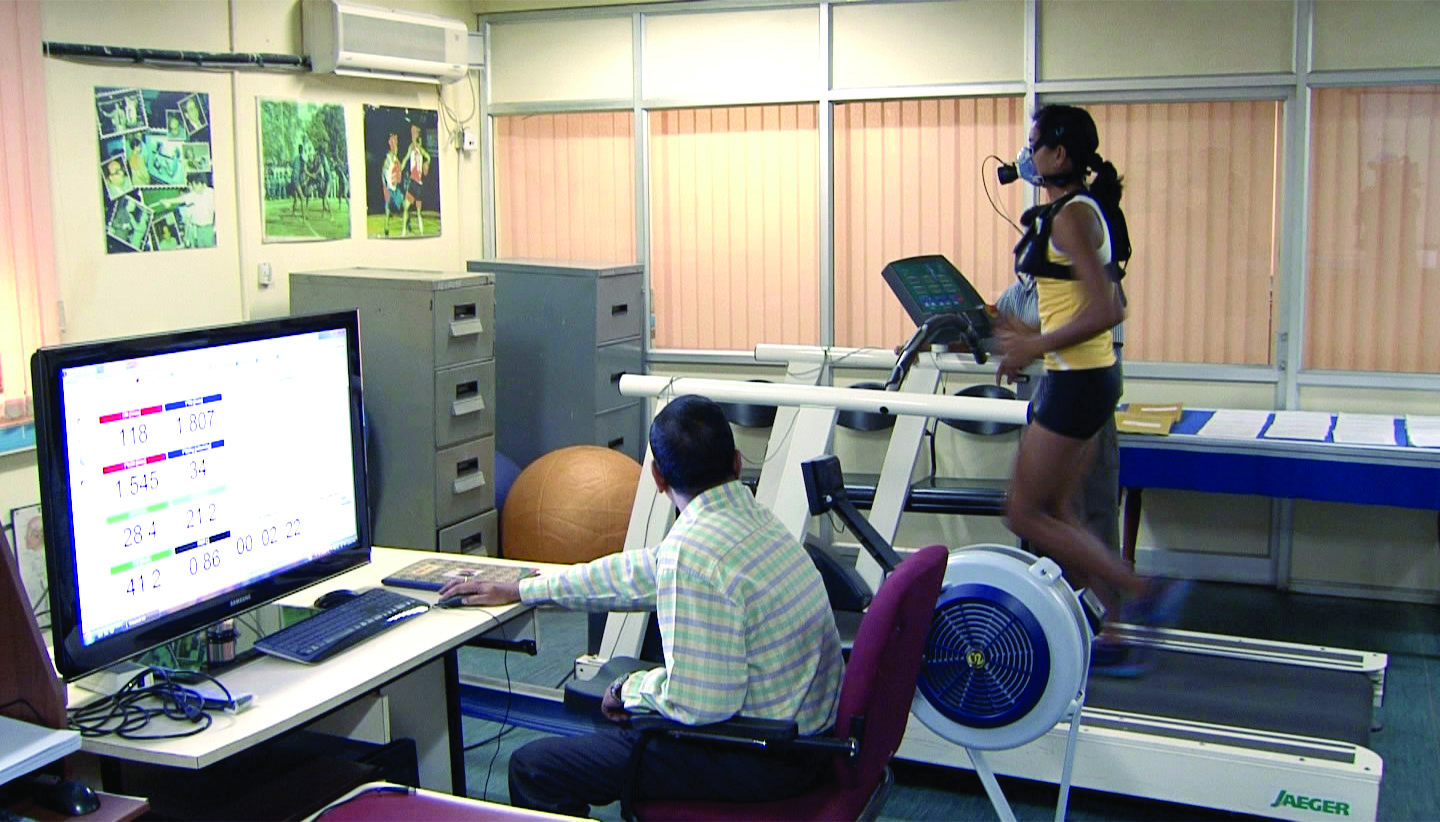
Sports Science and the Advancement in Soccer
Sports science plays a major role in 21st-century soccer. Player diets, gym work, out-straining sessions, and recovery activities are carefully analyzed.
At the highest level, much of team analysis is data-driven. Wearable technology tracks player work rate, distance covered, and types of movements carried out in games and training. These upper-body compression vests contain state-of-the-art athletic instruments to gather data on players’ moves.
- FIFA authorized wearable GPS tracker designed to analyze and...
- Detailing your speed, sprint, distance, power, load &...
- Compare your numbers against friends, the competition and...
- Transform your preparation, performance and recovery with...
- Set up a team and invite your team members to monitor your...
Product: Updated 2024-10-13 | Images: Amazon Product Advertising API | #ad - soccerblade.com is an Amazon Associate
This data can then be used to analyze players’ output and performance. It can also be used as a guide for recovery to ensure that injury-preventative measures are being taken. A considerable emphasis is now placed on healing in the modern game.
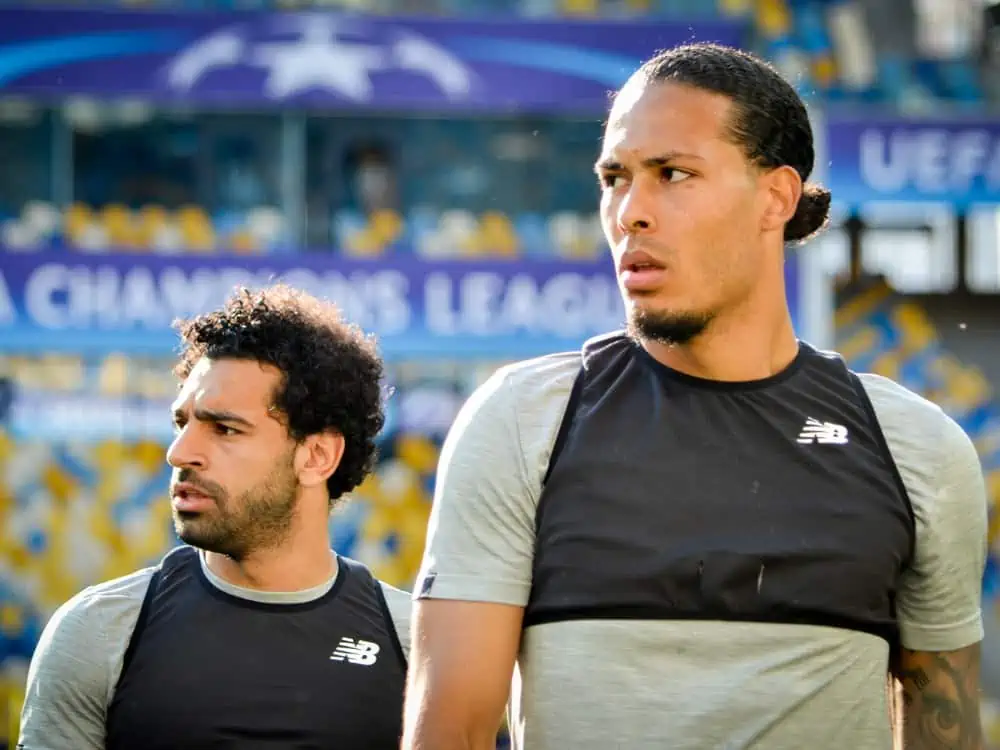
Recover & Physio Changes in the Game of Soccer
Players undergo individual and group recovery sessions explicitly designed to counteract the physical punishment that their bodies endure. All professional players take these recovery methods;
- Ice-baths
- Cryotherapy
- Massages
- Physical therapy sessions
Sleep plays a massive part in the recovery process. Many professionals will monitor their sleep by coaches and be directed to designated ‘sleeping zones’ on the training grounds for any additional rest.
The influence of sports science has resulted in players being the fittest that they’ve ever been. Even compared to 20 years ago, the modern pro’s work rate and fitness level are far superior.
History and Changes in Soccer Tactics and Style of Play
Throughout the history of soccer, we’ve witnessed eras of dominance by different teams and playing styles. Tactics, formations, and playing styles are perhaps the aspects of soccer that have changed most over time.
1870 – 1930 Soccer Tactics
In the early days (the 1870s), when the game’s rules differed from today, teams set out in wildly attacking formations. It would be a regular occurrence for teams to play in a 2-2-6 or 1-2-7 shape! Passing was not the main feature of the game.
Teams would march forward in a swan-like formation. Players would dribble at the opposition with their teammates in support, collecting loose balls. This trend continued throughout the following number of decades.
The 1950s Soccer Style
The 1950s saw the Hungarian national team make some of world football’s most influential tactical developments. In a historic game against England, Hungary played a deep-lying midfield player who partnered up with a central defender.
They then pushed 2 other defenders into attacking full-back positions (much like we see in today’s game). Although they still deployed 4 strikers, they were constantly on the move in search of space to create meaningful attacks.
This led to a lot of goals. Hungary beat England 6-3 at Wembley that day in front of 100,000 fans.
England vs Hungary, 3-6, 1953.
The 1960s and Four in Defense
Brazil, between 1958 and 1970, was the first team to operate with a 4 man backline successfully. They played with 2 central defenders and 2 attacking full-backs, a tactic that’s remained a staple in the game ever since.
This gave them a solid defensive foundation and allowed the likes of Pele to wreak havoc on their opposition.
The 1970s and Total Soccer
The antidote to this Brazilian dominance was forged in the Netherlands. In the 1970s, “Total Football” was birthed, led by Dutch talisman Johan Cruyff. This style of play has been the most significant and influential tactical evolution in the history of soccer.
Rinus Michel’s genius system involved constant movement and interchanging of positions by all outfield players. It was the first glimpse the world got of fluid soccer. To the untrained eye, it often looked like players were wandering the field as they pleased.
But, in reality, they were operating in a precise footballing system and philosophy. This style created the framework for Pep Guardiola’s masterful Barcelona, Bayern, and Manchester City teams of the modern era.
The 1980s Strong Defense Tactics
The famous “Catenaccio” (door bolt) was a heavily defensive tactic adopted in Italy in the 1960s. However, it was used most successfully in the ‘80s to counter the Dutch philosophy.
Although this formation had flaws, mainly when the team was in possession, the style of play laid the foundations for many great Italian teams. Since then, we’ve seen several decades of Italian powerhouses enduring tremendous success in Europe. This tactical formation led to Italy’s World Cup triumph in 1982.
The 2010s and the Tiki Taka
The next period of dominance by one particular style arrived around 2008, with Pep Guardiola’s Barcelona. This approach naturally bled into the Spanish national team, leading to a World Cup win in 2010 and back-to-back European Championships in 2008 and 2012.
Like the “Total Football” approach, the “Tiki Taka” style of play, adopted by Barcelona and the Spanish national team of this era, involved fluid football. Large amounts of possession and intense high pressing off the ball were core features of the game plan.
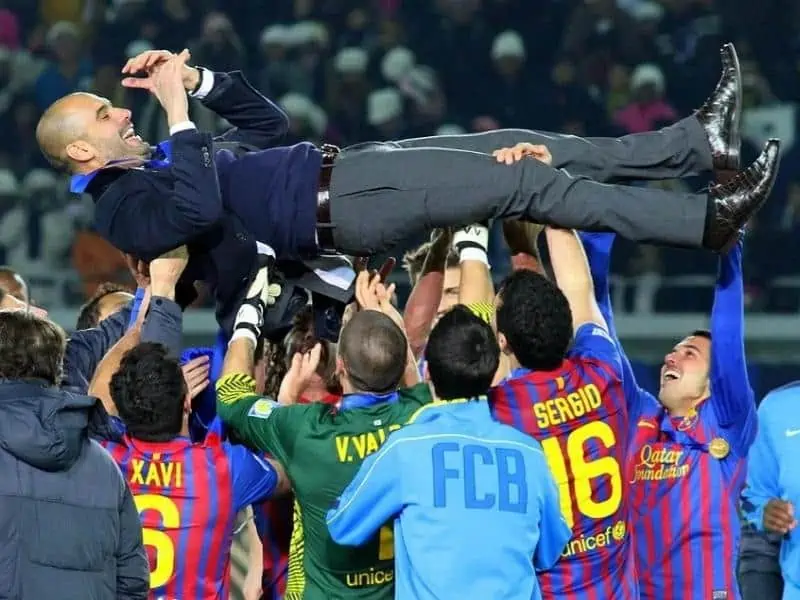
Pep Guardiola’s Changes to The Modern Game
Despite Guardiola’s departure from Barca in 2012, they’ve remained dominant in world football. Since 2008, they’ve been almost untouchable domestically, picking up
- 8 La Liga titles
- 6 Copa Del Reys
- 6 Spanish Super Cups in 11 seasons.
- They’ve also lifted the Uefa Champions League trophy 3 times in that period.
The success of both these teams has impacted soccer on a global scale. Teams worldwide are implementing Barcelona training methods at the grassroots level. We now see low-tier teams adopting a possession and pressing approach. Long balls are becoming a rarity in modern soccer.
The Future Styles and Tactics in Soccer
What tactical trend is in the pipeline for future generations? Sportswriter Jonathan Wilson believes that the cyclical nature of the game is already being demonstrated in the form of fast-paced counter-attacking teams.
Liverpool is an obvious example of this.
Although Klopp’s side shares certain qualities with a Pep Guardiola-type team, their doggedness, ruggedness, and directness set them apart somewhat. If Wilson is correct, we may be in for an exciting new wave of high-octane soccer over the coming seasons!

Changes in Coaching and Tactics
One of the notable changes in coaching methods is the shift towards a more holistic approach to player development. Coaches now focus not only on technical and physical aspects but also on mental and psychological aspects. The importance of nutrition, rest, and recovery has also been emphasized.
Tactically, there has been a shift towards more pressing and high-intensity play styles. Pressing involves putting pressure on the opponent’s defense to regain possession quickly. This style of play requires players to be physically fit and mentally alert. Teams like Barcelona and Liverpool have popularized it.
Possession
Possession-based styles of play have also become more prevalent. Teams now strongly emphasize ball retention, using short passes, and maintaining game control. This style of play requires players with good technical skills and a high tactical understanding. It has been associated with teams like Barcelona and Manchester City.
Video Analysis
Video analysis has played a significant role in shaping tactical approaches. Coaches can now access extensive footage of matches and analyze opponents’ strengths and weaknesses. This allows them to devise specific game plans and tactical adjustments during matches.
Statistics
The development of advanced statistics and data analysis has also influenced coaching methods. Coaches can now gather detailed information on player performance, team dynamics, and match statistics. This data-driven approach helps in decision-making, player selection, and strategic planning.

Furthermore, the influence of successful coaches and teams has also shaped tactical approaches. For example, the success of teams like Barcelona under Pep Guardiola and the Spanish national team under Vicente del Bosque popularized possession-based play and the use of the “tiki-taka” style.
Coaching methods and tactical approaches in soccer have evolved to become more comprehensive, data-driven, and dynamic. The emphasis is maximizing player potential, creating effective game plans, and adapting to different opponents and match situations.
The rise of pressing and possession-based play styles reflects the changing demands of the modern game and the pursuit of success.
Rise of Pressing and Possession-Based Play:
- Pressing:
- Pressing involves applying intense pressure on the opposition when they have the ball, aiming to regain possession quickly.
- Popularized by teams like Johan Cruyff’s Barcelona and Jurgen Klopp’s Borussia Dortmund and Liverpool, pressing disrupts the opponent’s rhythm and creates opportunities to attack swiftly.
- Variations include high pressing, counter-pressing (Gegenpressing), and deep pressing.
- Possession-Based Play:
- This style focuses on maintaining control of the ball, dictating the game’s tempo, and patiently building up play.
- Pioneered by teams like Pep Guardiola’s Barcelona, this approach emphasizes technical skill, short passing, and movement.
- It’s not just about keeping the ball but using it effectively to create scoring opportunities while minimizing the opponent’s chances.
Impact on Modern Soccer:
- Tactical Flexibility: Modern teams often adapt their tactics based on the opponent, emphasizing tactical intelligence and versatility among players.
- Physical and Mental Demands: The physical and mental demands on players have increased, with a greater emphasis on fitness, pressing, and quick decision-making.
- Data and Technology: Data analysis and technology in coaching have grown, allowing for more detailed analysis of player performance and opposition tendencies.
- Youth Development: Coaching at youth levels has also evolved, with a greater focus on developing technical skills and tactical understanding from an early age.
The Future of Soccer Money and Styles
We’ve come a long way since the 1-2-7 formations of teams in the 1800s. The modern game is now acutely tactical and played under scientific guidance by the fittest of athletes. Not only this, but the beautiful game is also directly observed and followed on a vast array of platforms. There are more eyes on the sport than ever before.
This benefits players and teams financially but also creates added pressure. There is no escaping the bright lights! Technology continues to shape the world that we live in.

Impact of Sports Science and Medicine
Advancements in sports medicine and sports science have significantly impacted preventing and treating injuries in soccer players. These advancements have improved player safety, enhanced recovery processes, and extended playing careers.
One area where sports medicine has made significant progress is in injury prevention. Through research and analysis, medical professionals have better understood the risk factors and mechanisms of common soccer injuries.
This knowledge has led to the developing of specific injury prevention programs focusing on strengthening and conditioning exercises, flexibility training, and proper warm-up routines. These programs aim to reduce injuries, particularly muscle strains, ligament tears, and overuse injuries.
GPS
In addition to injury prevention programs, technological advancements have played a crucial role in injury prevention. Wearable devices like GPS trackers and accelerometers allow coaches and medical staff to monitor players’ workload, movement patterns, and fatigue levels.
This data helps in identifying potential injury risks and adjusting training programs accordingly. Furthermore, video analysis tools enable medical professionals to assess movement patterns and biomechanics, identifying any faulty mechanics that may contribute to injury risk.
Medicine
Sports medicine has advanced treatment options and rehabilitation techniques when injuries occur. Medical professionals have access to cutting-edge diagnostic tools, such as MRI scans and ultrasound, which aid in accurate diagnosis and targeted treatment plans.
Surgical techniques have also improved, with minimally invasive procedures allowing for faster recovery and reduced scarring.
Rehabilitation
Rehabilitation protocols have become more specialized, incorporating individualized programs that address specific injuries and player needs. Rehabilitation includes manual therapy, strength and conditioning exercises, balance and proprioception training, and sport-specific drills.
Sports medicine professionals work closely with players, coaches, and trainers to ensure a comprehensive and successful rehabilitation process. Furthermore, sports medicine has significantly managed player workload and fatigue to prevent overuse injuries. Sports scientists and medical staff closely monitor players’ training load, match minutes, and recovery strategies.
This information helps develop personalized training programs and schedule rest periods to prevent fatigue-related injuries.

Recovery
The impact of sports medicine on soccer is evident in the increasing number of players who can recover from severe injuries and return to play at a high level. In the past, specific injuries, such as ACL tears, were considered career-threatening.
However, with advancements in surgical techniques and rehabilitation protocols, players can now successfully recover from such injuries and continue their careers. Players can better protect themselves from injuries, recover faster, and extend their playing careers through injury prevention programs, advanced diagnostic tools, and specialized rehabilitation techniques.
This has profoundly impacted the game, ensuring the health and well-being of players and improving the overall quality of play.
Impact on Soccer:
- Reduced Injury Rates: While injuries are still a part of the sport, their frequency and severity have been mitigated through preventive measures.
- Extended Careers: Players can now extend their careers, with many playing at the highest level well into their 30s and even early 40s.
- Improved Performance: Enhanced fitness and conditioning have contributed to the overall improvement in the speed and intensity of the game.
- Player Welfare: Greater focus on the holistic well-being of players, considering both physical and mental aspects.
Related Questions
How have soccer balls changed?
Soccer balls have slowly developed from pig bladders and skulls to today’s aerodynamic, high-performing balls. The modern ball is a standardized size 5.
How have cleats changed?
Cleats were originally very heavy and leatherbound. The cleat progressed to a less severe shoe, resilient to wear and tear but less prone to absorbing moisture.
Over time, cleats further developed in this manner. The modern cleat is exceptionally lightweight and is designed for control, comfort, and speed.
How have uniforms changed?
Uniforms have changed significantly over the years also. ‘Jerseys’ from the olden days were heavy materials that offered little ventilation and were prone to soaking in considerable moisture.
Although fashion and style have influenced how uniforms looked over the years, the modern-day soccer jersey contains technology that absorbs sweat and moisture, regulates temperature, and helps maximize performance.
Share the post "How Soccer Has Changed (Revolution or Evolution)"
Joel is a seasoned soccer journalist and analyst with many years of experience in the field. Joel specializes in game analysis, player profiles, transfer news, and has a keen eye for the tactical nuances of the game. He played at various levels in the game and coached teams - he is happy to share his insight with you.




